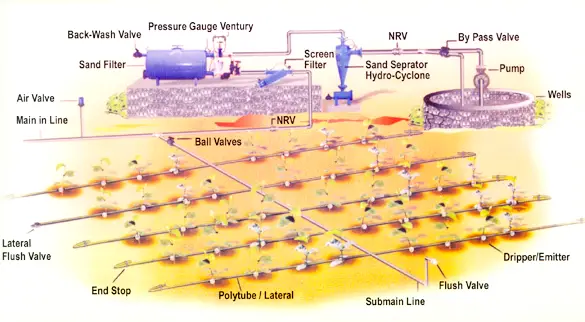A drip
irrigation system is an great method to conserve water, save money
and maintain the plants around your home. This system provides
complete coverage of water supply in an area to ensure surplus yield.
Drip irrigation Systems are usually the best decision for watering a
finished bed with trees, bushes and perennials, since they give you
culminate control over how much water each plant gets.
Advantages and Disadvantages
The advantages of drip irrigation systems are:
- Water application efficiency is high if managed correctly.
- Field leveling is not necessary.
- Moisture within the root zone can be maintained at field capacity.
- Labour cost is less than other irrigation methods.
- Soil type plays less important role in frequency of irrigation.
- Soil erosion is lessened.
- Weed growth is lessened
The Disadvantages of drip irrigation systems are:
- Drip irrigation requires an economic Investment
- Filtration is a must
- A lot of work at the beginning and the end of season.
- Water-application pattern must match planting pattern Limited reserved water in soil - mistakes can be fatal.
- Drip irrigation requires maintenance and high-quality water
Parts of Drip Irrigation System
basic parts used in drip irrigation include:
- 1.Pump station.
- 2.By-pass assembly
- 3.Control valves
- 4.Filtration system
- 9.Emitting devices
- 10.Micro tubes
Uses of
Drip Irrigation Systems
Drip
irrigation is used in farms, commercial greenhouses, and residential
gardeners. Drip irrigation is adopted extensively in areas of acute
water scarcity and especially for crops and trees such as coconuts,
containerized landscape trees, grapes, bananas, ber, eggplant,
citrus, strawberries, sugar cane, cotton, maize, and tomatoes.
For more details about Drip Irrigation Systems Manufacturers here :


No comments:
Post a Comment